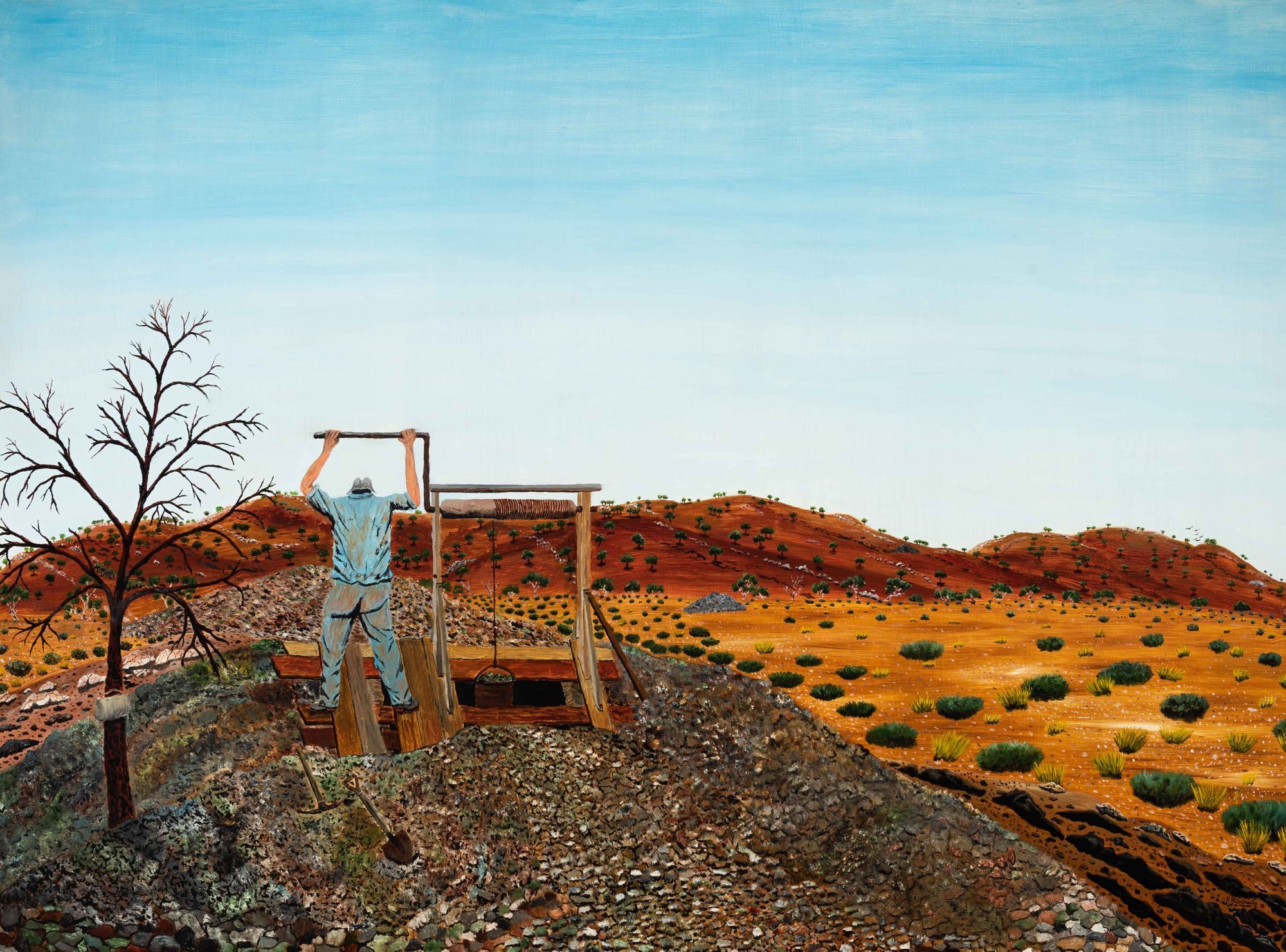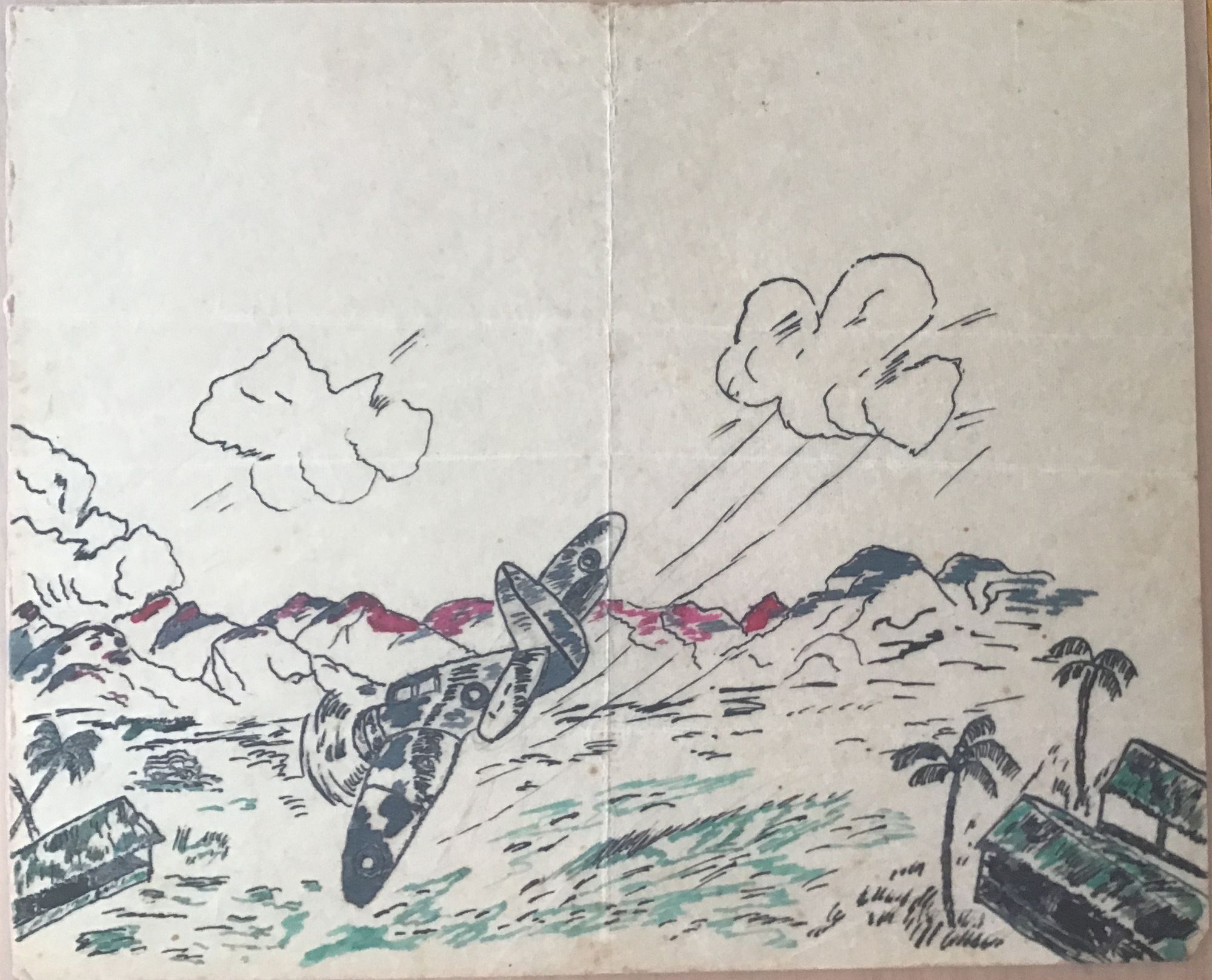The Magic of Hugh Schulz Part 1

A love of art is about a love of relationships.
The artist engages in the chosen subject matter to the extent that it becomes as deep and meaningful as a love affair.
The viewer engages in works of art that they find enthralling to the extent that they become a dedicated follower of a selected artist and their works.
The dedicated follower becomes a collector of works: most often spanning a wide variety of styles and artists but sometimes almost exclusively of one genre or one artist.

This is a story about two men - both in love with the beauty of the Australian outback.
One, a painter with the burning passion to record his understanding of the landscape; the other, a collector who discovered someone who could recreate his view of the land he loved.
The artist is Australian outback painter
Hugh Schulz (1921-2005) - Brushman of the Bush.

Hugh Schulz: Koonaberri Range Country 50cm x 60cm (1) ©S. Lindeman
The collector is Andrew from the Hunter Region of New South Wales who says:
With the magic of his brush Hugh Schulz transforms the unforgiving, desolate, dangerous place of the Australian desert into a warm, welcoming and beautiful place where you just want to be.

Hugh Schulz: Red Hop Time 60cm x 90cm (1) ©S. Lindeman

Hugh Schulz2 ©S.Lindeman
Hugh Schulz stands up high as one of Australia's greatest naive artists - if not the greatest. As one of the Brushmen of the Bush3 he helped put Broken Hill on the map as the Outback Art Capital of Australia.
His knowledge of, and ability to, recreate the natural minutiae that assembles to form the Australian arid and semi-arid landscapes are symbolic of his vast love for this incredible environment.

Hugh Schulz: Dry Times 30cm x 45cm (1) ©S. Lindeman
A little about the life of the painter Hugh Schulz before we meet the collector. This information has been compiled largely from speaking with his daughter Sandra Lindeman.4
Born in Innisfail, in far North Queensland in 1921, Hugh Schulz's childhood was tough. His mother (who was Scottish) died before he was four and, as his father found it difficult to cope, Hugh spent his childhood in the care of others. At a young age he was living in Broken Hill attending the Burkeward Public School. Leaving school at 14 years Hugh set off for the gold mining town of Kalgoorlie, Western Australia to find his brother and thus began his working life as a miner. 4
Miners and prospectors are amongst the very few humans that appear in Hugh's paintings - a testament to the signifance he placed on the role these men played in Australia's history.


It is very evident that Hugh Schulz saw mining as part of the natural environment - a marriage if you like between toiling the land for gain while at the same time loving the beauty of the landscape. These miners belong in the narrative of the outback as emphasised by the title: Prospector with his Eagles.


Spending so much time underground had a significant effect on Hugh's perception of the world above the earth. In the sunlight he saw the minute details of nature. But it was many more years before he got the chance to begin to express what he could see on canvas.
When WWII broke out Hugh joined up and served in the 1st Australian Field Squadron, Royal Australian Engineers, AIF in New Guinea.4 It is from a young soldier in war torn New Guinea that we see the first examples of Hugh Schulz paintings.
In a blog post still to come, on the works of Hugh Schulz, we will return to examine these paintings and others from his time in New Guinea. There are many features of his technique present here that become more developed as he emerges as an artist.


Hugh returned to Broken Hill after the war and in March 1946 married Beatrice (Beat) Simes whom he had gone to school with. Life as a miner and prospector was tough but Hugh and Beat worked to build their own home with their own hands - one room at a time.4
As his children grew so did Hugh's innate passion to draw and paint. He began doing the illustrations for his children's homework tasks: at first using coloured pencils and later watercolour.4
Gradually Hugh Schulz the artist took over from Hugh Schulz the miner though he never lost his love of country. The treasures he sought under ground were replaced with the treasures he knew could be found in the flora and fauna that grew and flourished in the landscape.

By 1976, as one of the Brushmen of the Bush, Hugh became involved in exhibiting his paintings to raise money for various charities. With a strong sense of social justice, no doubt born from his impoverished childhood and great love of children and family, Hugh remained steadfast throughout his life to do what he could to contribute to the well-being of others.
Winning a major art prize gave him the confidence to set up shop as a full time artist, to give up mining to concentrate on his painting. In 1978 he had his first one-man exhibition at the La Perouse Gallery in Griffith, New South Wales.
Hugh Schulz went on to produce a large collection of paintings which are now scattered across Australia and no doubt overseas. There are nine of his paintings held by the Broken Hill Gallery (which are being displayed as part of this series of posts) and others in private collections.
It is very rare to be able to get into the mind of an Art Collector, to be able to share the journey they are on, to know the motivation and the passion behind the collection.
The two paintings shown below were the first Hugh Schulz paintings purchased by Andrew from the Hunter Region and because of this they hold a very special place.

Road in the Outback Hills (5)©S.Lindeman

Outback (5)©S. Lindeman
These two paintings were the first Hugh Schulz paintings purchased by Andrew.
Tomorrow we will look at these and many other Schulz paintings up much closer.
But Andrew's adventure as a collector of Hugh Schulz paintings started with a Christmas present in the early 1980s: a book of Banjo Paterson poetry illustrated by Pro Hart.
As Andrew says: up to that point in time wild horses couldn't have dragged me into an art gallery, but Pro Hart changed all that.
Tomorrow we are going to learn what changed Andrew's mind about paintings and together we will journey into the outback where we will learn more about the remarkable Hugh Schulz's perception of the land he loved.

References
Hugh Schulz exhibited with the Brushmen of the Bush for many years and his art has appeared in many books on naive art including:
Brushmen of the Bush. The journey of five Australian artists (First published 2006), recompiled by Jack Absalom(n.d.)
Carapic, Vasa (c1994) Naive Art in Australia, Canada and Europe, Duke Gallery, Melbourne.
Ellis, Barry 1984 The artists of Broken Hill, Lutheran Publishing House, Adelaide.
McCullough, Bianca (1977) Australian Naive Painters, Hill of Content, Melbourne.
McCullough, Bianca (1980) Each Man's Wilderness- Reflections by Australian Artists, Ribgy, Adelaide.
Graeme Norris. Graeme (1979) Australian Artists Today Graeme Norris, Carlton.
Warner, Sandra (1994) Australian Naive Art, Craftsman House.
AnArt4Life posts on the Brushmen of the Bush can be found by using the search tool in the menu for the names: John Pickup, Pro Hart, Jack Absalom, Eric Minchin, Hugh Schulz.
Credits
1. From the collection of Andrew from the Hunter Region of NSW.
2. From the collection of Sandra Lindeman.
3. In 1972 when Broken Hill artist Eric Minchin did not have enough paintings for a second exhibition he invited fellow artists (Hugh Schulz, Jack Absalom, John Pickup and Pro Hart) to join him to exhibit in Sydney. The name Brushmen of the Bush was coined by Lorraine Hickman in The Australian Women's Weekly's article on the exhibition. The "Brushmen of the Bush" went on for many, many years to have exhibitions in Australia and Overseas to raise money for various charities.
4. Phone interview with Sandra Lindeman, daughter of Hugh Schulz.
5. Image provided by the Broken Hill Regional Art Gallery from their collection and with the assistance of Eileen Wright, Collections Project Manager.

